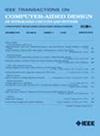通过机会性自修复技术近乎免费地延长 3-D nand 闪存的使用寿命
IF 2.7
3区 计算机科学
Q2 COMPUTER SCIENCE, HARDWARE & ARCHITECTURE
IEEE Transactions on Computer-Aided Design of Integrated Circuits and Systems
Pub Date : 2024-11-06
DOI:10.1109/TCAD.2024.3447225
引用次数: 0
摘要
3-D nand 闪存因其高性能、大存储容量和低功耗而成为现代数据中心的主流存储介质。然而,随着技术的进步,闪存的使用寿命却在缩短。最近的研究发现,闪存块可实现的编程/擦除(P/E)周期数与两个相邻擦除操作之间的停留时间(DT)有关。较长的 DT 可以提高可实现的 P/E 周期,从而延长闪存的使用寿命。本文发现,当闪存块的 DT 分布不均匀时,可实现的 P/E 周期会增加。基于这一观察结果,本文提出了一种延长闪存寿命的机会主义自修复方法。通过保持两个区块数量不等的组,即活动组和修复组,所提出的方法在擦除操作分布上造成了不平衡。活跃组进行更频繁的擦除操作,导致更短的 DT,而愈合组则经历更长的 DT。根据活跃组的分区比例,定期切换两个组的角色。这种角色切换可确保每个区块同时经历较短和较长的 DT 时间,从而导致 DT 分布不均,放大自修复效果。评估结果表明,与基线方法和相关工作相比,所提出的方法平均可将闪存寿命提高 19.3% 和 13.2%,且几乎不产生开销。本文章由计算机程序翻译,如有差异,请以英文原文为准。
Near-Free Lifetime Extension for 3-D nand Flash via Opportunistic Self-Healing
3-D
nand
flash memories are the dominant storage media in modern data centers due to their high performance, large storage capacity, and low-power consumption. However, the lifetime of flash memory has decreased as technology scaling advances. Recent work has revealed that the number of achievable program/erase (P/E) cycles of flash blocks is related to the dwell time (DT) between two adjacent erase operations. A longer DT can lead to higher-achievable P/E cycles and, therefore, a longer lifetime for flash memories. This article found that the achievable P/E cycles would increase when flash blocks endure uneven DT distribution. Based on this observation, this article presents an opportunistic self-healing method to extend the lifetime of flash memory. By maintaining two groups with unequal block counts, namely, Active Group and Healing Group, the proposed method creates an imbalance in erase operation distribution. The Active Group undergoes more frequent erase operations, resulting in shorter DT, while the Healing Group experiences longer DT. Periodically, the roles of the two groups are switched based on the Active Group’s partitioning ratio. This role switching ensures that each block experiences both short and long DT periods, leading to an uneven DT distribution that magnifies the self-healing effect. The evaluation shows that the proposed method can improve the flash lifetime by 19.3% and 13.2% on average with near-free overheads, compared with the baseline and the related work, respectively.
求助全文
通过发布文献求助,成功后即可免费获取论文全文。
去求助
来源期刊
CiteScore
5.60
自引率
13.80%
发文量
500
审稿时长
7 months
期刊介绍:
The purpose of this Transactions is to publish papers of interest to individuals in the area of computer-aided design of integrated circuits and systems composed of analog, digital, mixed-signal, optical, or microwave components. The aids include methods, models, algorithms, and man-machine interfaces for system-level, physical and logical design including: planning, synthesis, partitioning, modeling, simulation, layout, verification, testing, hardware-software co-design and documentation of integrated circuit and system designs of all complexities. Design tools and techniques for evaluating and designing integrated circuits and systems for metrics such as performance, power, reliability, testability, and security are a focus.

 求助内容:
求助内容: 应助结果提醒方式:
应助结果提醒方式:


